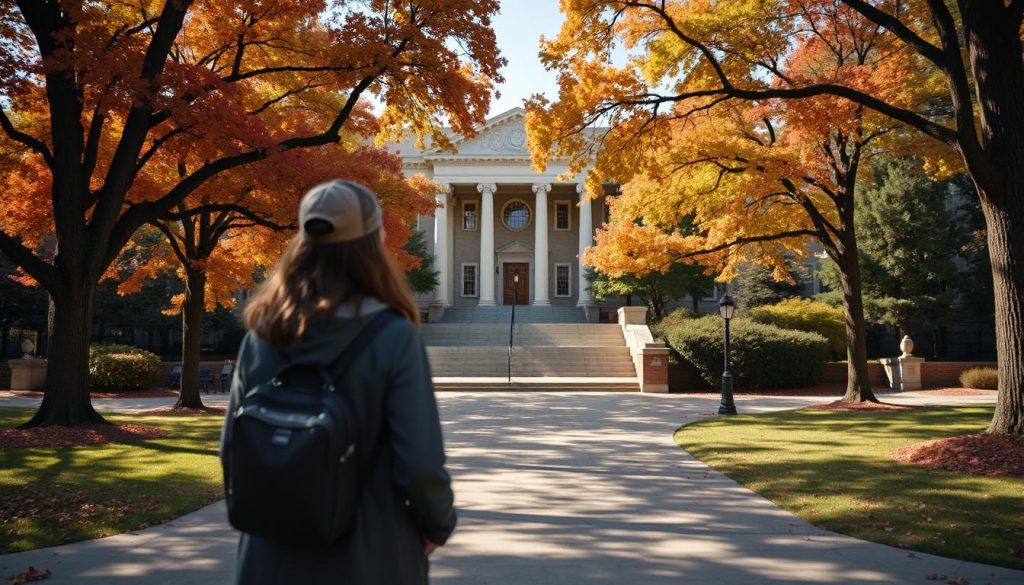Introduction
Getting admission to a top U.S. university is a dream for many students worldwide. The U.S. is home to some of the best educational institutions, including Ivy League schools like Harvard, MIT, and Stanford. However, the application process is competitive and requires careful planning. In this guide, we will walk you through the essential steps to improve your chances of securing admission to a top U.S. university.

Step 1: Research Universities and Programs
Before starting the application process, it’s crucial to research different universities and their programs. Consider factors like:
- Ranking and Reputation: Check university rankings on platforms like QS World University Rankings or U.S. News & World Report.
- Course Curriculum: Ensure that the university offers the specialization you want.
- Admission Requirements: Review GPA, standardized test scores, and other criteria.
- Location and Cost: Consider living expenses, tuition fees, and scholarships available.
Step 2: Maintain an Excellent Academic Record
Academic performance is one of the key criteria for admission. To enhance your chances:
- High GPA: Aim for a GPA of 3.5 or above on a 4.0 scale.
- Challenging Courses: Take Advanced Placement (AP), International Baccalaureate (IB), or honors courses if available.
- Consistent Performance: Maintain strong grades throughout high school or undergraduate studies.
Step 3: Prepare for Standardized Tests
Most U.S. universities require standardized test scores for admission. Common tests include:
- SAT/ACT: Required for undergraduate admissions.
- GRE/GMAT: Required for graduate programs, especially for business or technical degrees.
- TOEFL/IELTS: Mandatory for international students to prove English proficiency.
Prepare well in advance by taking practice tests, enrolling in coaching programs, and improving weak areas.
Step 4: Build a Strong Resume and Extracurricular Profile
Top universities look for well-rounded candidates with:
- Leadership Experience: Holding positions in clubs, organizations, or community groups.
- Research or Internships: Demonstrating hands-on experience in your field.
- Community Service: Participation in volunteering activities.
- Sports and Arts: Achievements in athletics, music, or arts add value to your application.
Step 5: Write a Compelling Personal Statement
Your personal statement or college essay is a critical component of your application. To make it stand out:
- Tell Your Story: Focus on your passion, experiences, and what makes you unique.
- Showcase Achievements: Highlight your academic and extracurricular accomplishments.
- Explain Your Goals: Discuss how the university and its program align with your career aspirations.
- Proofread and Edit: Ensure clarity, grammar accuracy, and originality.
Step 6: Obtain Strong Letters of Recommendation
Most U.S. universities require two to three recommendation letters from teachers, mentors, or employers. Choose recommenders who:
- Know you well academically and personally.
- Can highlight your strengths and achievements.
- Provide specific examples of your skills and potential.
Request letters well in advance and give your recommenders ample time to write a detailed and positive reference.
Step 7: Apply Through the Right Platform
Most universities accept applications through online portals such as:
- Common App: Used by over 900 U.S. universities.
- Coalition App: Another platform used by selective institutions.
- University-Specific Portals: Some universities have their own application systems.
Ensure that you submit all required documents before deadlines.
Step 8: Apply for Scholarships and Financial Aid
U.S. universities can be expensive, but many offer scholarships and financial aid. Options include:
- Merit-Based Scholarships: Awarded based on academic achievements.
- Need-Based Financial Aid: Provided to students based on financial need.
- External Scholarships: Offered by organizations like Fulbright, Chevening, and others.
Complete the FAFSA (Free Application for Federal Student Aid) or university-specific financial aid forms if applicable.
Step 9: Ace the Admission Interview (If Required)
Some top universities conduct admission interviews to assess candidates. Tips to excel:
- Prepare Common Questions: Practice answers for “Tell me about yourself,” “Why this university?” and “What are your career goals?”
- Show Enthusiasm: Express genuine interest in the program.
- Be Professional: Dress appropriately and maintain confident body language.
Step 10: Submit Applications Before Deadlines
Universities have different application deadlines, such as:
- Early Decision (ED): Binding commitment, typically due in November.
- Early Action (EA): Non-binding, allows you to apply early.
- Regular Decision: Standard deadline, usually in January.
- Rolling Admission: Applications reviewed as they arrive.
Conclusion
Gaining admission to a top U.S. university requires dedication, planning, and preparation. By maintaining strong academics, excelling in standardized tests, building a solid extracurricular profile, and crafting a compelling application, you can increase your chances of success. Start early, stay organized, and aim high!
FAQs
1. What is the minimum GPA required for U.S. universities?
- Most top universities prefer a GPA of 3.5 or higher, but requirements vary.
2. Can I apply without SAT/ACT scores?
- Some universities have test-optional policies, but high scores improve your chances.
3. When should I start preparing for U.S. university applications?
- Ideally, at least 1-2 years before applying to meet all requirements.
Good luck with your applications!